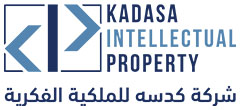SAIP Guiding Principles for AI

Introduction
The Guiding Principles for Patents Related to Artificial Intelligence published by the Saudi Authority for Intellectual Property (SAIP) mark a significant step in articulating how Saudi Arabia intends to approach one of the most pressing challenges in modern patent law: the intersection of artificial intelligence (AI) and inventorship. These principles, while non-binding, offer authoritative guidance on how AI-assisted and AI-generated inventions are to be treated under the Kingdom’s intellectual property framework.
This commentary reviews those guiding principles. The aim is to evaluate the practical and legal impact of the guiding principles and assess how they align with international practice and the evolving legal landscape, especially in light of Saudi Arabia’s ambition to become a regional hub for AI innovation under Vision 2030.
1. Reaffirming the Human-Centric Nature of Patent Law
A central tenet of the guiding principles is the affirmation that inventorship under Saudi law is limited to natural persons. This mirrors international consensus—from the United States to the European Union and China—where courts and patent offices have repeatedly rejected applications that name an AI system as the sole inventor (e.g., the DABUS case).
SAIP’s position is codified both in its Intellectual Property Law (2023) and reiterated in the guiding principles: patents require “evident contribution” by a natural person, and fully AI-generated inventions are ineligible for protection and instead enter the public domain.
This is consistent with the historical rationale of the patent system: to reward human ingenuity in exchange for public disclosure. SAIP, therefore, takes a clear stand against redefining “inventor” to include non-human entities, despite technological advancements that might suggest otherwise.
2. Practical Recognition of AI as an Inventive Tool
The first theme in SAIP guiding principles addresses AI-assisted inventions, confirming that AI can be used as a tool in the inventive process much like traditional laboratory instruments. Here, the human inventor remains responsible for identifying the problem, guiding the process, and interpreting AI-generated outputs.
Legal analysis supports this view, noting that AI-assisted inventions are patentable under Saudi law provided the human contribution is “significant”. This aligns with international approaches like the USPTO’s 2023 guidelines, which state that a human using AI to aid in conception may still qualify as the inventor.
Importantly, there is no requirement to disclose AI’s role in the application unless necessary for enablement. However, this may evolve as questions around obviousness and disclosure sufficiency become more nuanced with the spread of generative AI tools.
3. Rejection of Autonomous AI Invention Claims
In the second theme, the guiding principles categorically reject the notion that AI can independently own or generate protectable inventions. The DABUS case is cited as a global reference point, and Saudi Arabia’s rejection of the DABUS application aligns it with leading IP jurisdictions.
SAIP law further supports this by stating that if a work is generated “independently” by AI, it must enter the public domain. This approach avoids diluting the patent system’s human-inventor core and sidesteps the complex legal problem of assigning rights to entities lacking legal personhood.
4. Patents for AI Itself: Scope and Limitations
The third theme in the guiding principles addresses patents directed at AI technologies themselves—for instance, improved neural networks, training methods, or specific AI applications in industry.
Here, the principles make a critical distinction between:
- Purely expressive software (e.g., mathematical models or code snippets), which remains unpatentable;
- Versus software with a technical effect, which may be eligible if it solves a concrete technical problem.
This framework is consistent with TRIPS, EPO, JPO, and USPTO standards.
This commentary supports the need for sufficient disclosure, particularly where AI models risk becoming “black boxes.” This is crucial for satisfying enablement requirements under Saudi law and mirrors concerns in global jurisdictions about trade secrets being cloaked within patent filings.
5. Strategic Implications for Innovators and Practitioners
The convergence between the guiding principles and SAIP law suggests a coherent strategy to position Saudi Arabia as a secure and modern jurisdiction for AI innovation—with some key implications:
- Legal Certainty: Innovators know upfront that only human inventors will be recognized and that the line between AI-assistance and AI-generation is critical.
- Policy Support: The SAIP draft law includes provisions for expedited examination and financial incentives for AI-related inventions, reinforcing the Kingdom’s commitment to AI as part of Vision 2030.
- Patent Strategy Advice: Legal practitioners advising AI developers in Saudi Arabia must ensure:
- That the human contribution is clearly documented and traceable.
- That AI’s technical use is articulated where needed to meet disclosure standards.
- That claims are framed to reflect practical applications of AI, not just abstract methods.
Conclusion: A Balanced and Forward-Looking Framework
The Guiding Principles for Patents Related to Artificial Intelligence present a clear, aligned, and internationally competitive framework. Saudi Arabia has struck a careful balance: upholding the foundational principle of human inventorship, while embracing AI as a transformative enabler of innovation.
By aligning with global standards, engaging in WIPO dialogue, and introducing a dedicated legislative chapter for AI-related IP, Saudi Arabia not only supports local inventors but also sends a clear message to international stakeholders: AI innovation is welcome—within a principled, human-centric IP system.
As Saudi Arabia continues to reform its IP infrastructure and advance its innovation economy, this approach ensures the country remains both legally sound and technologically ambitious.
Mohamamd Jomoa
22 April 2025
If you would like a copy of the official guidelines published by SAIP in English, please contact mjomoa@kadasa.com.sa
